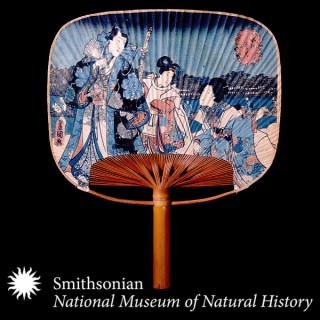
Stories from the Collections
Follow Stories from the CollectionsIn this series of videos, listen to our scientists discuss some of their favorite objects and artifacts from our collections and more. Across each of our departments, researchers collect specimens: fossils, minerals, and rocks, plants and animals, and cultural artifacts. Collections care profession…
Smithsonian Institution National Museum of Natural History
- Sep 30, 2011 LATEST EPISODE
- infrequent NEW EPISODES
- 14m AVG DURATION
- 7 EPISODES
More podcasts from Smithsonian Institution National Museum of Natural History
Latest episodes from Stories from the Collections

This video tour gives you a glimpse of how to explore Smithsonian Institution's National Museum of Natural History collections using Google Earth. To take your own tour, download Google Earth and dive down to the Gulf of Mexico to begin to explore the Smithsonian's marine collections.

Roy Clarke, an authority on meteorites, shows some of the specimens from the Allende meteorite fall. He came to the Smithsonian in 1957, after several years as an analytical geochemist in a U.S. Geological Survey laboratory. Clarke has been involved in the acquisition of numerous meteorites on behalf of the Smithsonian. His first major opportunity to go out into the field came in 1969, with the Allende meteorite fall in northern Mexico. Roy Clarke, now a Research Chemist Emeritus in the Division of Meteorites at the Museum, has become interested in the history of his field, and how it began, especially as it pertains to the Smithsonian’s collection. He has published several articles, including “Meteorites and the Smithsonian”; edited a volume about the Port Orford, Oregon, meteorite mystery; and is currently writing about the development of meteoritics at the Smithsonian with Dr. Howard Plotkin.

Geologist and Curator of the US National Gem Collection, Dr. Jeffrey Post presents this talk on gems and minerals in the national collection.

Watch Smithsonian entomologist Don Davis talk about some of the specimens that he has collected — from the larvae of an unusual kind of clothes moth that feeds on the horns of animals, which he found and reared in South Africa, to insects 20-30 million years old preserved in amber

When birds and planes collide: Carla Dove, a forensic ornithologist at the Smithsonian's National Museum of Natural History, talks about the work at Smithsonian's Feather Identification Lab and its role in improving aviation safety.

Kris Helgen tells the story behind a man-eating leopard specimen for the centennial of the museum and the specimen itself.

Paul Pohwat shows examples from the NMNH collections of smithsonite, a mineral named after James Smithson, the founder of the Smithsonian. Paul Pohwat is the Mineral Collection Manager of the Division of Mineralogy at the Smithsonian's National Museum of Natural History.

















